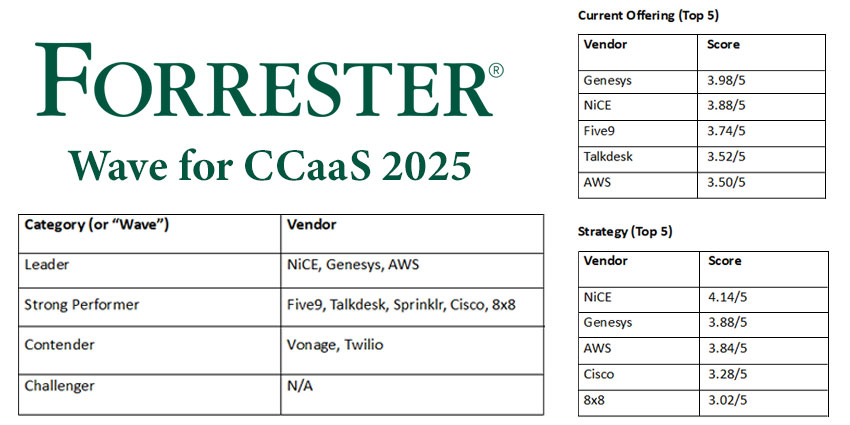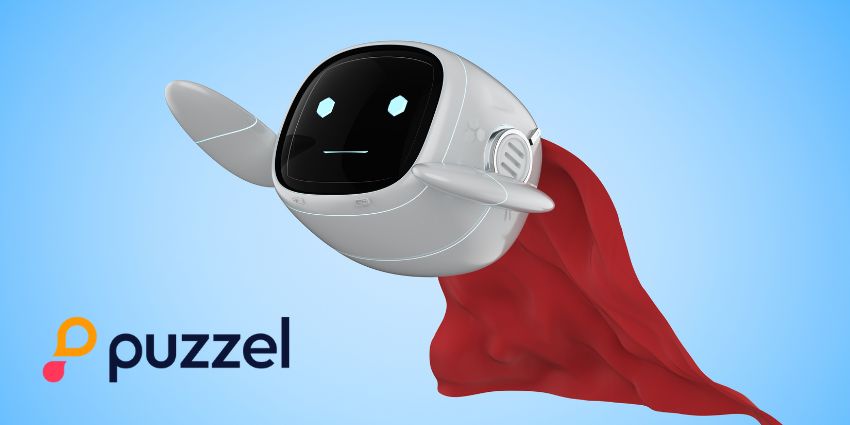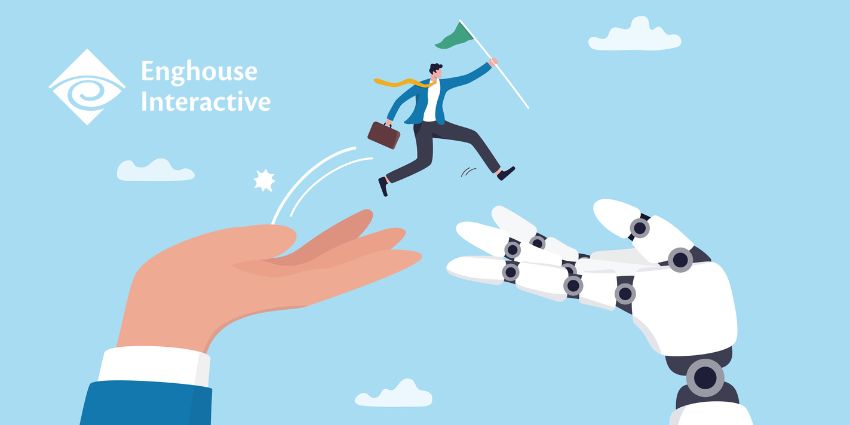Decision tools such as the Gartner Magic Quadrant and Forrester Wave have become relied upon by IT decision makers to help clarify the muddy waters of technology purchases.
However, while the analysts who create these documents put a tremendous amount of work into them, they are still open to debate.
Earlier this year, Forrester released its Wave for contact center as a service (CCaaS). Since I’ve had some time to review and talk with the vendors and a handful of customers.
Below are some thoughts on the participating vendors and their placement in the report.
NiCE
NiCE ranked highest on “strength of strategy” and second on “strength of offering”, which aligns with the Gartner Magic Quadrant. Despite that second place on the latter, NiCE’s offering is the most feature-rich.
The document states: “While NiCE’s breadth is unique, with leading solutions for WFO (workforce optimization) and analytics being part of the system.” However, it then dings the vendor, noting that CXone Mpower “is dependent on a third-party conversational AI provider for many applications.”
Nevertheless, using third parties, particularly for AI, is seemingly the right strategy, enabling NiCE to quickly pivot if a better solution presents itself.
NiCE is in the correct category and correctly placed. My criticism is more of a nitpick.
Genesys
Genesys is also a leader and ranked highest in strength of offering and second only to NiCE in strategy.
The strength of offering location is accurate, although it’s the strategy that I question. The company has been close to the same spot in the Wave for years, but it’s undergone some major strategy changes, such as shutting down the multi-cloud division and ending innovation on its Engage on-premise product.
While these may make sense for the business, changes this major should have moved the needle for Genesys positively or negatively, depending on whether Forrester agreed with them.
Amazon Web Services (AWS)
AWS is the third vendor in the leader section, but behind the others in both strategy and strength of offerings.
One notable point in AWS’s section is that it’s the only provider with above-average customer feedback. In the commentary, it states that the usage-based pricing made a significant difference to their business. It also states that Connect is complex and hard to learn. That’s counter to feedback I’ve had from users of Connect. This was true years ago, but Amazon has improved the UI considerably.
The commentary also notes: “AWS’s stated vision of being a leading provider of business applications is not differentiated, but that vision is misaligned with the broader AWS vision of having the ‘Amazon’ experience create unique capabilities.”
One of the flaws with decision tools, such as the Wave, is that they look at things through the product lens and not at a company level. Based on this, AWS should perhaps be edging closer to those out in front.
Five9
Five9 ranked highest of the strong performers for the strength of its offering. Its strength of strategy kept it out of the Leader’s section. That’s somewhat of a surprise, as Five9 has always been early with innovation. Indeed, the commentary states:
Five9 has a vision to pair AI and human agents to provide a new level of frictionless customer service experiences. The company’s roadmap is heavy with AI investment, and the go-to-market strategy is balanced between direct and partner sales to help it get the broadest coverage globally.
Customer feedback was also strong, except it noted, “one stated that some of the current offerings were ‘a little green’ at this time.” Given Five9’s share, roadmap, and strength of current product, Five9 may be disappointed not to appear in the Leaders portion.
Sprinklr
Sprinklr was slightly under Five9 and Talkdesk (more on Talkdesk below) in the Strong Performers category, which is a major achievement, but also quite the surprise.
Written into the commentary, Forrester states: “The roadmap for the Sprinklr Service product is below par and will be impacted in the short run by a need to harden and mature some of its capabilities. Historically, Sprinklr has focused on direct sales and white-glove service during deployment; now it is focused on building out its partner program, which is less mature than that of other vendors in this evaluation.”
The partner program is a key part of a vendor’s success. It’s possible that Forrester could have decoupled this from the evaluation criteria, but it should not.
I’d argue Sprinklr is better placed as a Contender, as its new CEO Rory Read, tries to build upon its early successes in the CCaaS market.
Cisco
Cisco is in the “Strong Performers” wave and, of those vendors, was the highest on “strength of strategy” and lowest on “strength of offering”. This might be a timing issue based on when the information was tabulated, but Cisco has recently loaded Webex Contact Center with features.
The related commentary cites: “Cisco references pointed out that the full Webex Contact Center suite was often ‘clunky’ to administer and felt like working with four different products. This gap is highlighted by the need for separate development environments to build voice or digital self-service applications.” Nevertheless, Cisco has made and plans additional progress here.
Given the size of its channel, its voice network’s reliability and ability to meet global demands, Cisco should inch closer to the top right, but Strong Performer is where it belongs. However, a wave of innovation at WebexOne later this year could change this.
8×8 & Talkdesk
8×8 and Talkdesk are the other two vendors in Strong Performers, and appear accurately placed.
For 8×8, a contact center placement is a win as one of the few UCaaS + CCaaS providers that made the group, as Zoom, RingCentral, and Dialpad are absent.
Evaluating 8×8 solely on the contact center, where much of its innovation has come in bridging the gap across the two domains, perhaps penalizes the vendor unfairly.
Talkdesk has come on strong and loaded its platform with AI capabilities. A leader position shouldn’t be too far away if it keeps its current trajectory.
The Value of the Forrester Wave Reports
The Forrester Wave and Magic Quadrant are helpful sources of insight on tech providers, as significant research goes into each study.
However, readers should note that they are static documents in fast-moving industries. The documents are often outdated by the time the submissions are in and the results tabulated. Roll the clock ahead a few months, and every vendor has changed.
It’s critical that every company does its own evaluation to understand what works best for them, as these present a guide but certainly not a holistic view of the industry at every moment. Consider it a blunt instrument that needs context for every deployment to be made sharp.
The opinions expressed in this analysis are those of the industry analyst, not necessarily CX Today.
CX Today’s Charlie Mitchell caught up with Max Ball, Principal Analyst at Forrester, at a recent industry event. Check out the video below for his take on the research paper and the current state of CCaaS.







